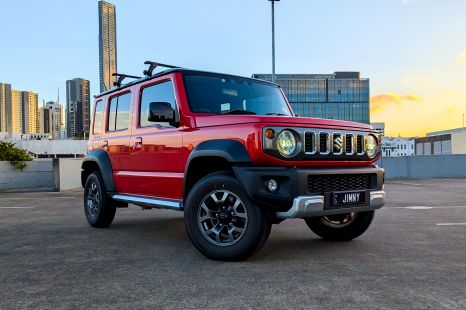

William Stopford
2026 Suzuki Jimny XL review
2 Days Ago
GWM's Haval H6 HEV remains a spacious and value-driven mid-size SUV. But as more rivals arrives in Australia, competition is heating up.



Marketplace Editor

Marketplace Editor


Marketplace Editor

Marketplace Editor
Quickly see how this car stacks up against its competition. Select any benchmark to see more details.
Where expert car reviews meet expert car buying – CarExpert gives you trusted advice, personalised service and real savings on your next new car.
The GWM Haval H6 Hybrid (HEV) was one of the first proper competitors to the top-selling Toyota RAV4 Hybrid.
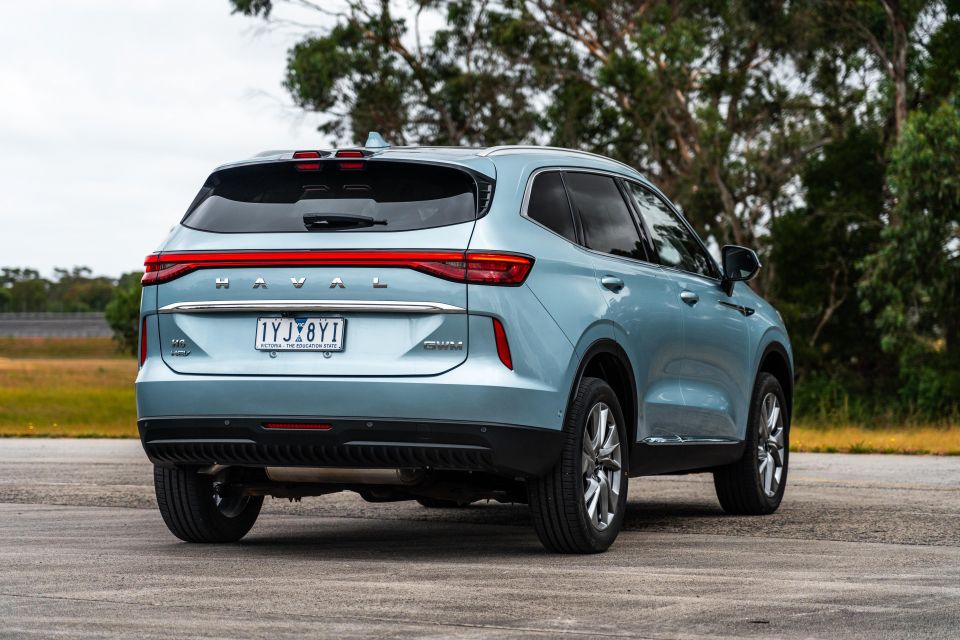
Note: This article is based off our most recent review of the H6, as specification has seen no major changes since publication.
We have updated key details such as pricing and specifications with the most up to date information available, and added imagery of the latest model where applicable.
Read the latest price and specs article here for all the details.
After years of inaction from other manufacturers, GWM launched the petrol-electric H6 HEV back in 2022 to cash in on growing demand for hybrid mid-size SUVs. Given how many you see on the roads these days the brand has clearly cashed in on pent-up demand.
The game has moved on though, with more rivals launching and economic pressures forcing incremental price rises. Has the 2024 GWM Haval H6 Ultra Hybrid (HEV) lost its shine a little?
Now priced at just under $46,000 drive-away, the flagship H6 HEV still represents strong value. If you want something cheaper, you can save $3500 and get the Lux HEV at the expense of some equipment items.
Both variants are still priced well below most electrified competitors.
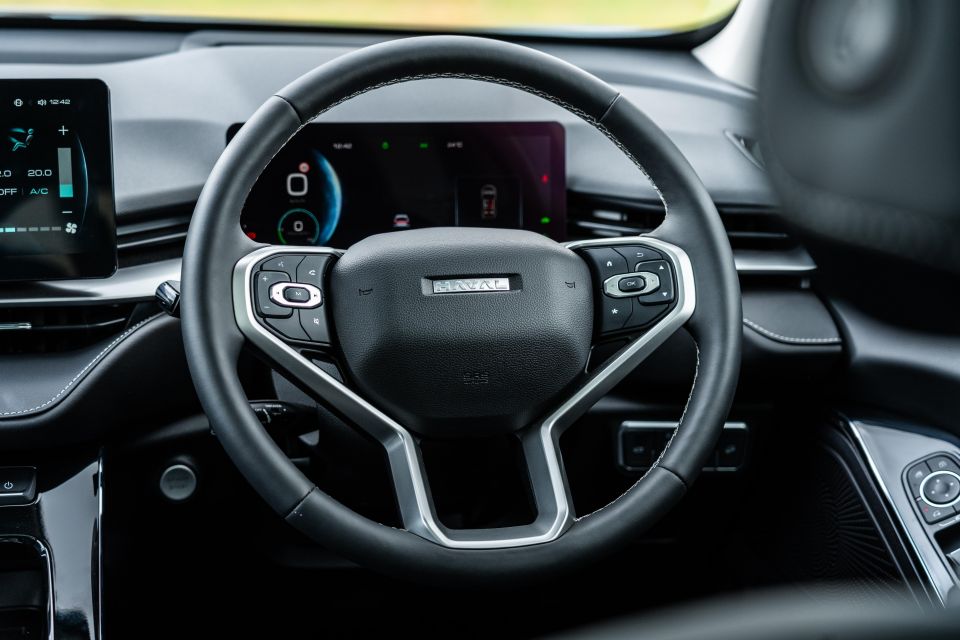
But with the Kia Sportage Hybrid now hitting showrooms priced from around $45,000 plus on-roads, and an updated Hyundai Tucson debuting the Sportage’s drivetrain in the coming months, GWM might want to be a little worried…
As the big-name OEMs start to catch up on the hybrid bandwagon, should you still consider the H6 HEV on your hybrid SUV shopping list?
Earlier this year, the entire Haval H6 range saw price cuts of up to $2000 valid until June 30. The Ultra Hybrid on test here saw a $1000 reduction to $44,990 drive-away.
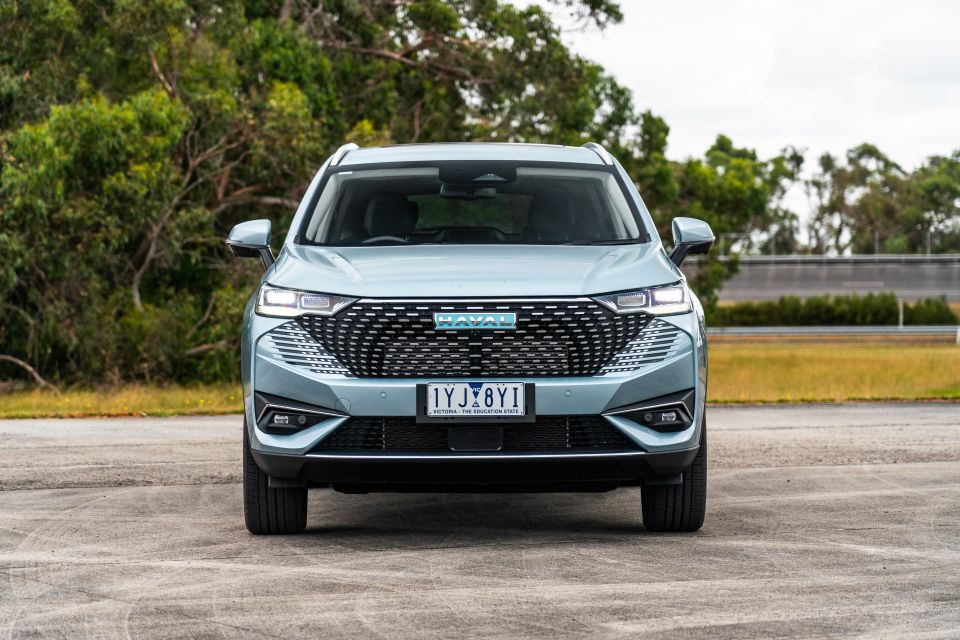
However, the brand is currently advertising $3000 savings off its original pricing, with the flagship HEV you see here available from $42,990 drive-away.
| Model | Drive-away price (until September 30, 2024) |
|---|---|
| GWM Haval H6 Premium | $30,990 |
| GWM Haval H6 Lux | $33,990 |
| GWM Haval H6 Ultra | $36,990 |
| GWM Haval H6 Lux Hybrid | $38,990 |
| GWM Haval H6 Ultra Hybrid | $42,990 |
To see how the H6 lines up against the competition, check out our comparison tool.
Buy your new car without the stress. It's fast, simple and completely free.

Great service from Travis and team, second time I have used this business would not hesitate to recommend them to anyone
Craig C.
Purchased a Ford Ranger in Sunshine Coast, QLD
CarExpert helped Craig save $7,224 on his Ford Ranger, now let us save you on your next new car.
Get your BEST priceAs has been the case since launch, the top-spec H6’s cabin presents well on first glance with fake leather lining most surfaces, large high-resolution displays, and a minimalistic approach to physical switchgear.
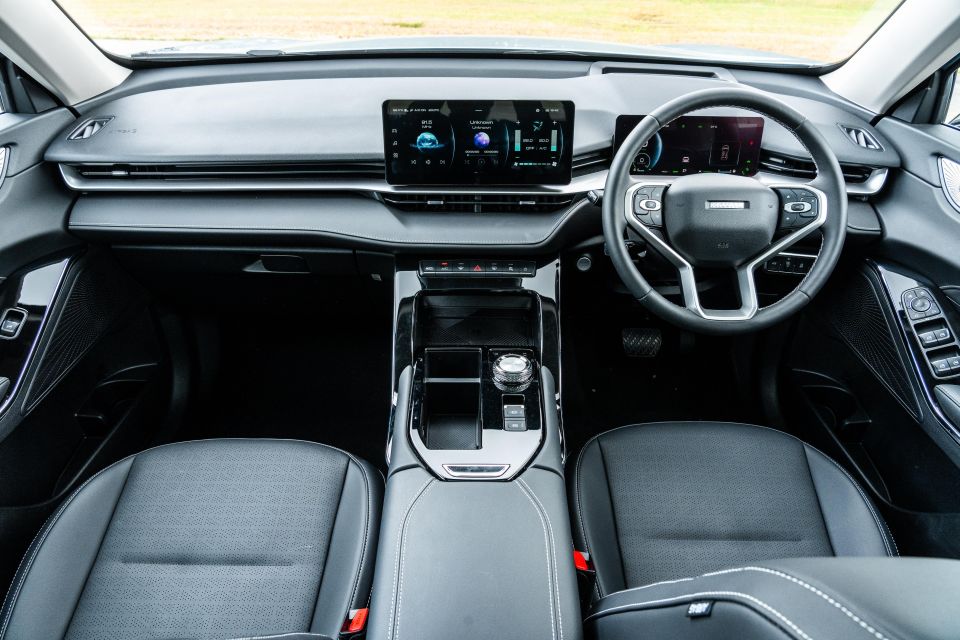
It shows just how far the Chinese brands have come in such a short time, though there are still some key areas for improvement that will no doubt be fixed with the next generation.
Hop in the driver’s seat and you’ll almost immediately notice the awkward positioning relative to the steering wheel. I typically like a low seating position and have long legs, but the van-like upward-facing steering wheel and oddly shaped driver’s seat mean it’s quite difficult to get comfortable – something echoed by colleagues.
Raising the seat base with a more upright backrest seemed to make it more bearable for my long-legged 6’1 frame, though I did feel as if I was forcing myself into the seat base and after longer drives would feel some soreness under the thigh and glutes.
Behind the steering wheel is a free-standing 10.25-inch digital instrument cluster that has a futuristic layout with fairly limited configurability. You can toggle the readouts on either side using the steering wheel buttons, but it lacks the personalisation and pizazz of something like Volkswagen’s Digital Cockpit.
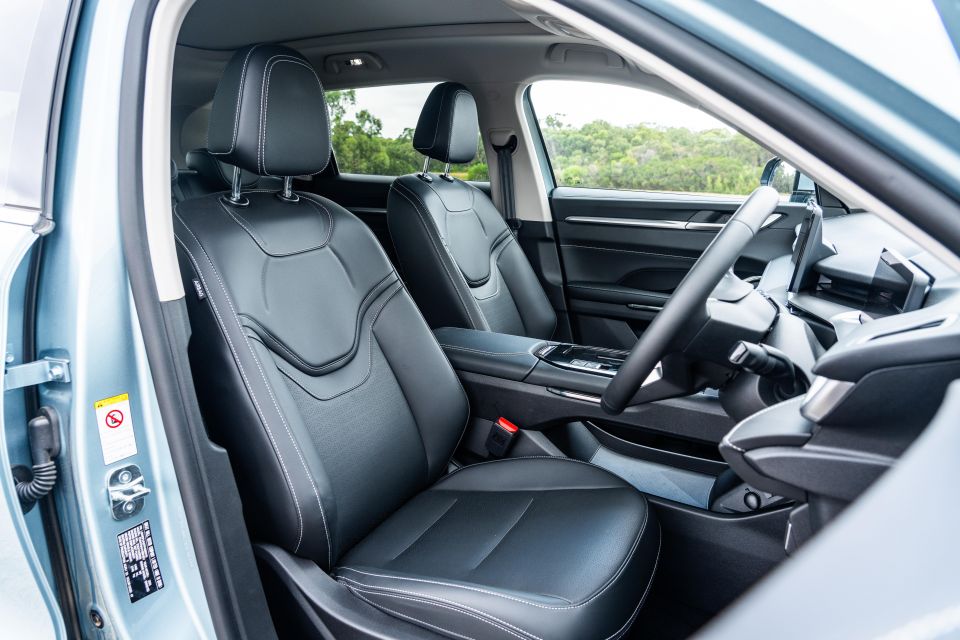
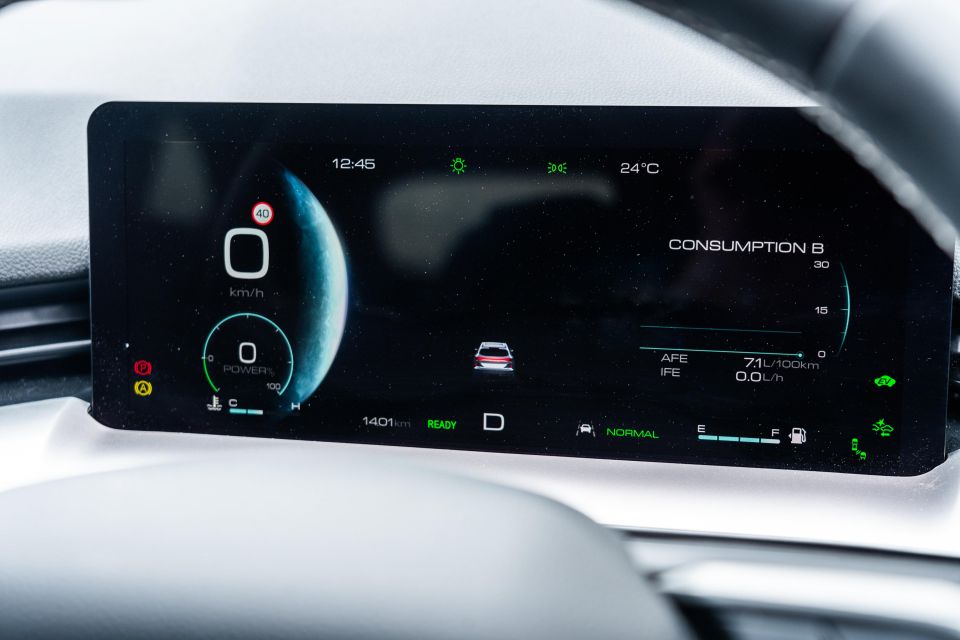
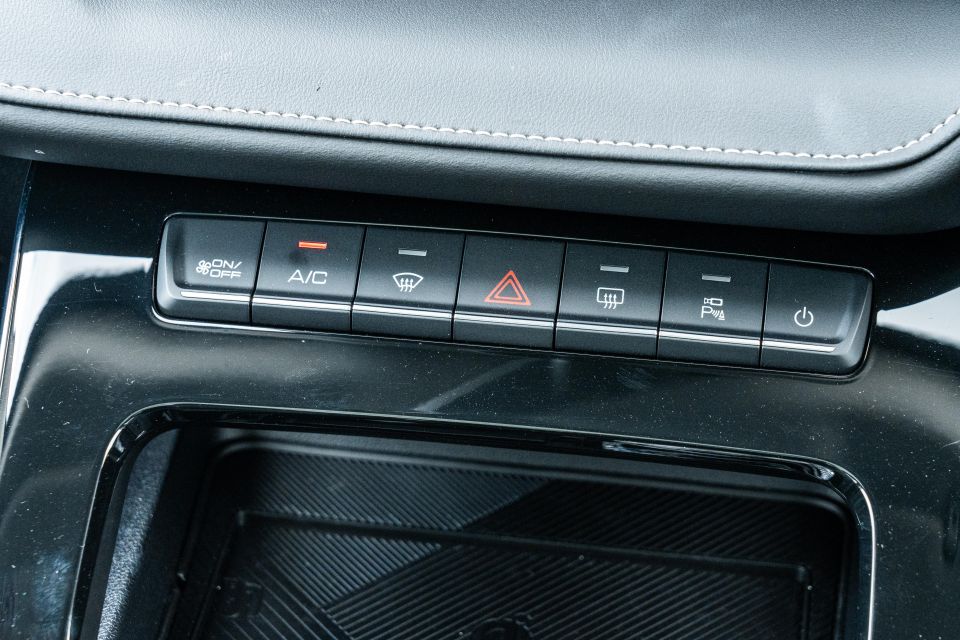
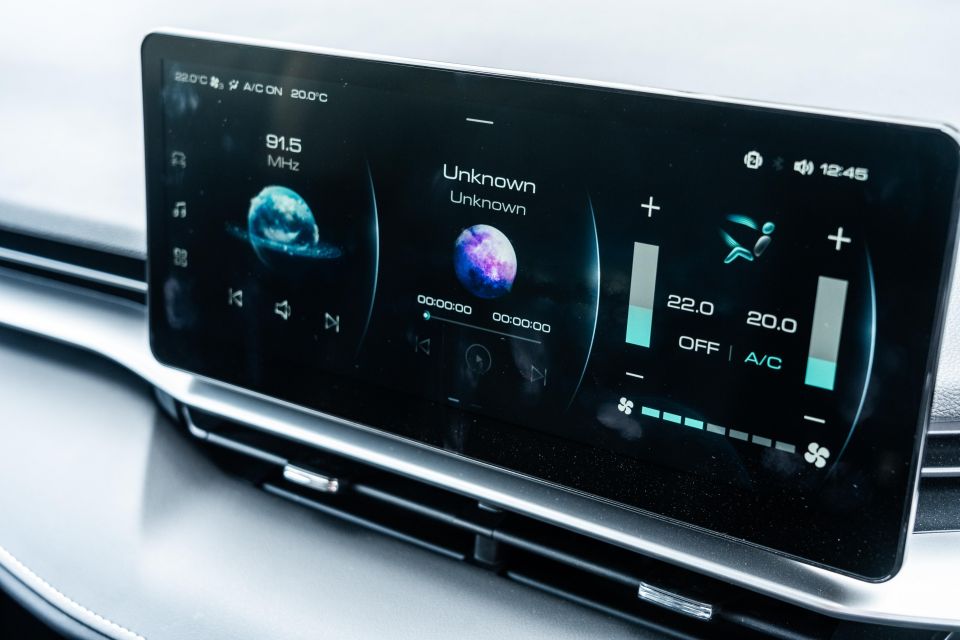
Perceived material and build quality generally are pretty good, with the aforementioned leatherette complemented by soft-touch plastics and gloss black trim for a classy, clean look – mind the fingerprints – and everything feels very well screwed together.
The 12.3-inch central touchscreen runs the infotainment system and also acts as the control centre for the HVAC. If you leave the native interface running with your phone connected via Bluetooth it works fine, although it’s quite basic in that there’s no embedded satellite navigation or DAB radio.
If you plug your phone in via USB for Apple CarPlay or Android Auto (no wireless), you need to exit the smartphone mirroring to access the climate controls. While changing the temperature isn’t something you need to do constantly, the air recirculation function is buried in this touchscreen menu, though thankfully the front and rear de-misters are physical buttons on the centre stack.
There’s decent storage about with modular cupholders, a shelf for your phone and built-in wireless phone charger, a hidden cubby under the centre tunnel, as well as a deep bin under the padded and stitched centre armrest. It also has decent-sized door pockets that can fit regular bottles, so most of your odds and ends have somewhere to go.
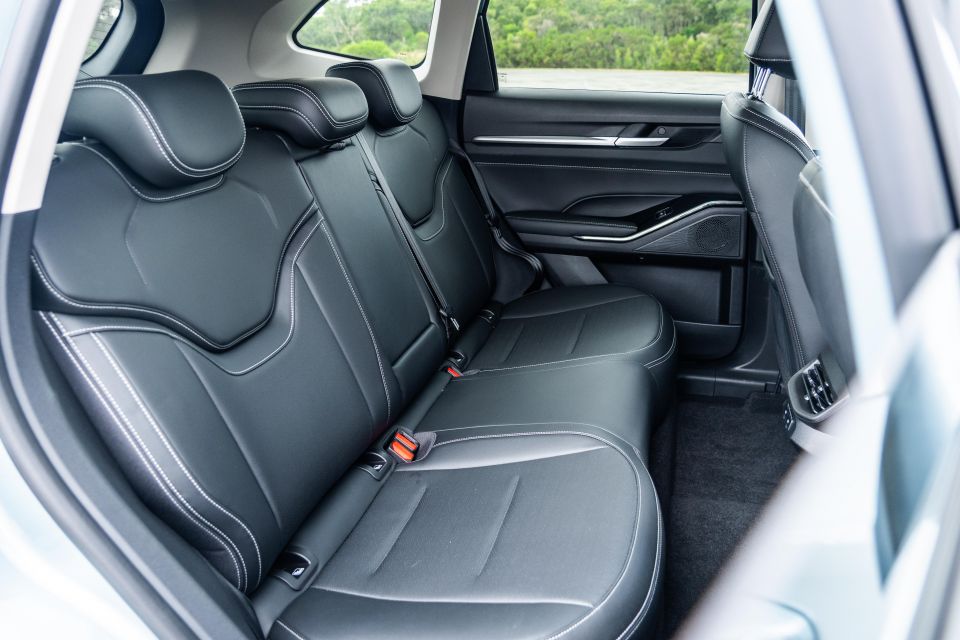
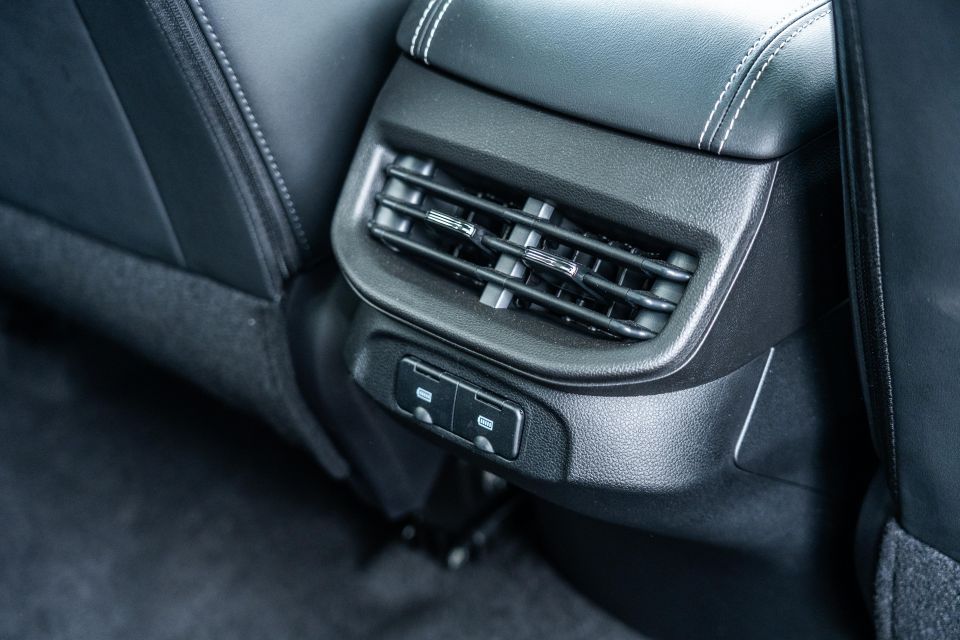
The second row is where the GWM Haval H6 really starts to shine. It’s still easily one of the most spacious second-row seats in the segment, and will appeal to growing families with lanky teenagers or those carting taller friends often – if you want more space for less money, this is a great option.
I fit comfortably behind my driving position, and there’s good width so you can seat three abreast in decent comfort. The flat centre seat cushion and minimal centre tunnel hump only further this, but the flat seating area and the slippery leatherette trim means the kids might be playing corners quite a bit.
Rear amenities include directional air vents, two USB charge points, map pockets behind both front seats, bottle holders in the doors, as well as a fold-down centre armrest with extra cupholders.
Kids are catered for with ISOFIX anchors on the outboard seats, as well as top-tether points across all three rear positions.
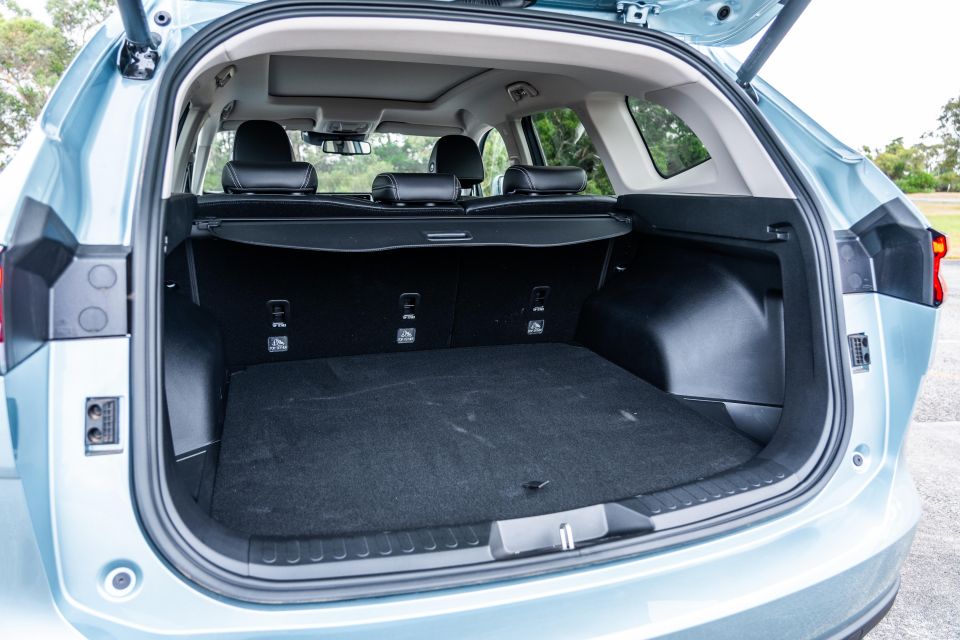
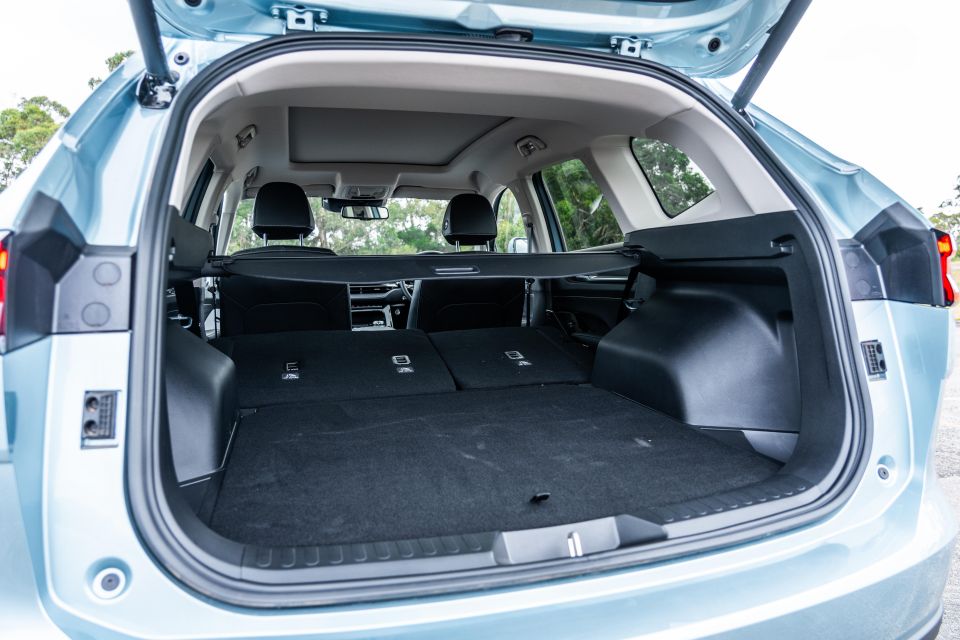
Behind those rear seats is one of the largest cargo areas in segment. Haval quotes 600 litres with the second row in use, expanding to 1485L with them folded.
It’s a nice square load area, and when the rear seats are folded it’s a relatively flat surface which helps stow longer, heavier items. Unfortunately there’s no remote releases for the second row in the boot area like some rivals.
Haval doesn’t fit a spare wheel of any kind under the boot floor of the H6 Hybrid, instead offering a tyre repair kit.
Non-hybrid versions of the H6 get a space-saver spare, which is also offered by the likes of the Toyota RAV4 Hybrid and Kia Sportage Hybrid – this is a consideration if you head out of town often.
To see how the H6 lines up against the competition, check out our comparison tool.
Unlike the petrol-powered H6 Ultra, the HEV is front-wheel drive (2WD) only.
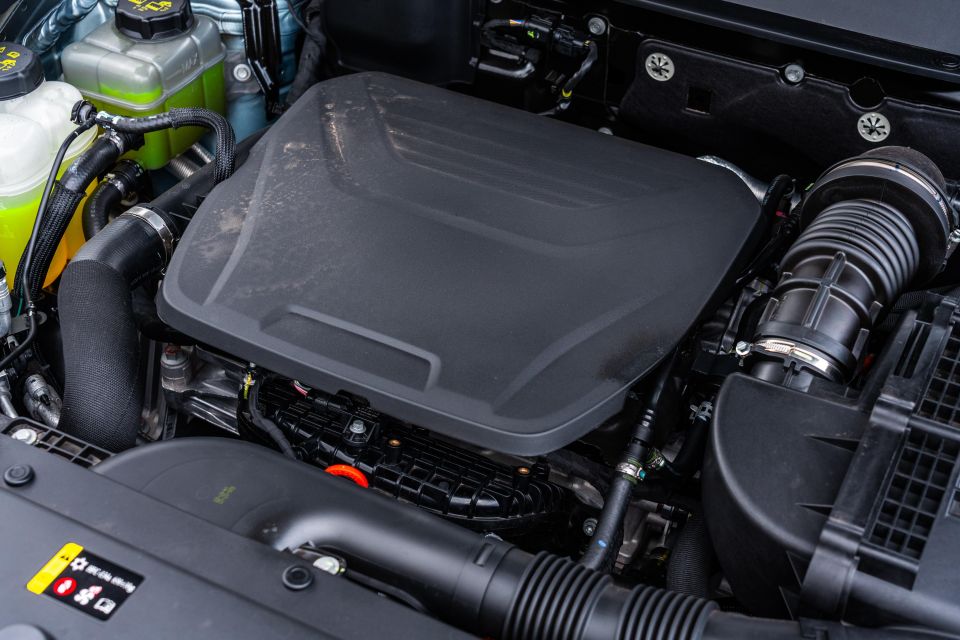
| Model | GWM Haval H6 HEV |
|---|---|
| Engine | 1.5L 4cyl turbo |
| Engine power | 110kW (5500-6000rpm) |
| Engine torque | 230Nm (1500-4000rpm) |
| Electric motor power | 130kW |
| Electric motor torque | 300Nm |
| Total system power | 179kW |
| Total system torque | 530Nm |
| Battery pack | Undisclosed capacity, Li-ion |
| Driven wheels | Front-wheel drive |
| Weight | 1690kg – kerb |
| Fuel economy | 5.2L/100km |
| Fuel economy (as tested) | 6.5L/100km |
| Minimum fuel requirement | 91 RON |
Our indicated fuel consumption figure was achieved in commuter conditions, including a mix of high-traffic city and suburban driving mixed in with some freeway stints.
To see how the H6 lines up against the competition, check out our comparison tool.
I’m not a particular fan of the petrol-only GWM Haval H6, and like the smaller Jolion if there was any variant I’d be recommending it’d be the hybrid.
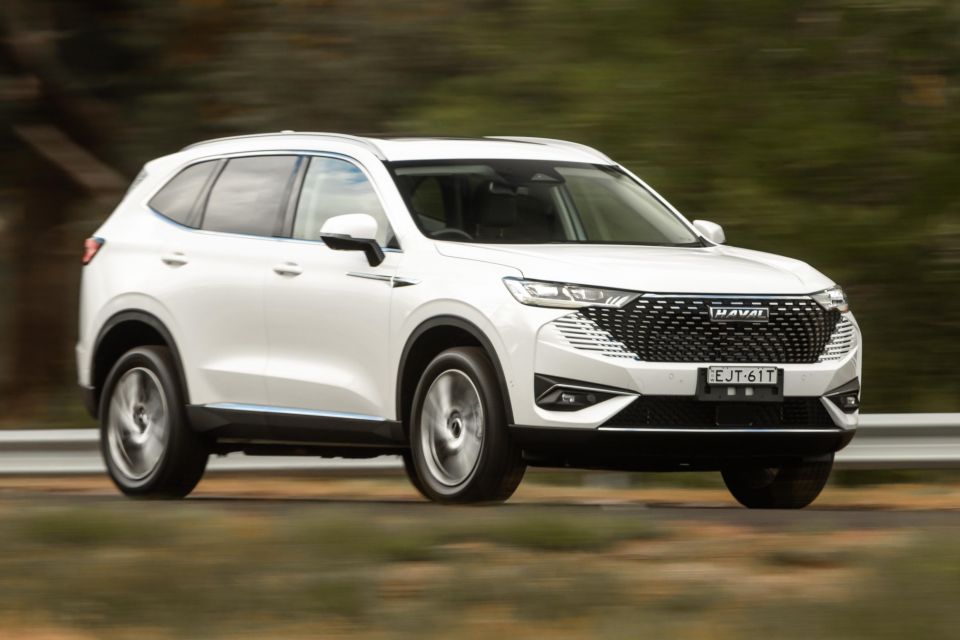
Compared to a Toyota RAV4 Hybrid, the Haval is able to get up to higher speeds from take-off using just the electric motor, and you don’t have to be gentle on the throttle to avoid waking the petrol engine. This is thanks to the more energy-dense lithium-ion battery and more powerful electric motor.
When the turbo engine does fire up and assist the electrified bits, there’s good insulation from vibration and noise, and it feels like the Haval’s drivetrain is better at shuffling between power sources for more linear acceleration.
Having a turbocharger also means there’s more engine torque down low and less juxtaposition between the response of the two different power sources.
The petrol engine is also less vocal under load than Toyota’s unit, and if you hoof it away from the lights the quoted 520Nm of combined torque is gradually put down to avoid lighting up the front tyres too much. I was actually quite impressed on the couple of occasions I really floored it that the FWD-only Haval got along nicely.
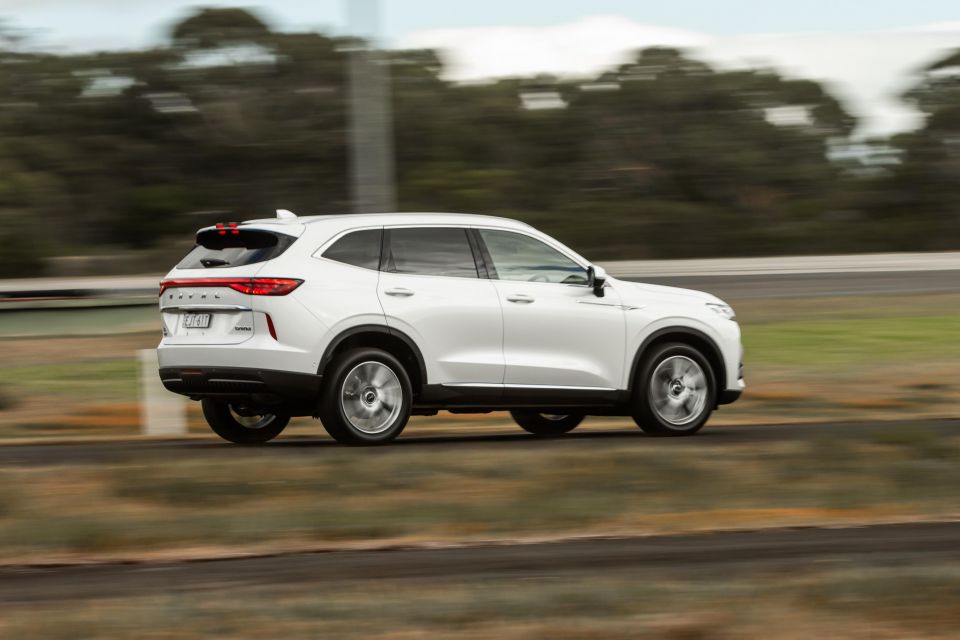
On the move the cabin is more hushed than key rivals and the suspension tune is tuned for comfort. That translates to a tall, lean-happy feeling in the bends if you throw the Haval at some corners, but this isn’t trying to put the ‘sport’ in ‘sports utility vehicle’.
The Haval H6 feels like a big, high-riding SUV from behind the wheel, from the perceived width and length to the driver controls and feeling of solidity at speed. For those who like that big-car feel, this will be a plus. For those perhaps wary of moving into an SUV who prefer the more athletic feel of a passenger car, it’s something to think about.
Like I mentioned earlier, the awkward driving position doesn’t help you feel particularly connected with the H6 either. There’s this awkward feeling of sitting on top of the car rather than in it, but not in the way a Land Rover gives you a commanding driving position, for example. It also makes longer trips a little tiresome.
The H6 Hybrid is softly sprung and the driver controls are pretty light. It’s all calibrated to be driven smoothly and efficiently with a focus on comfort. It mostly delivers on this too, irrespective of my issues with the driving position. The Chinese SUV impresses with its acceptably polished and refined on-road experience.
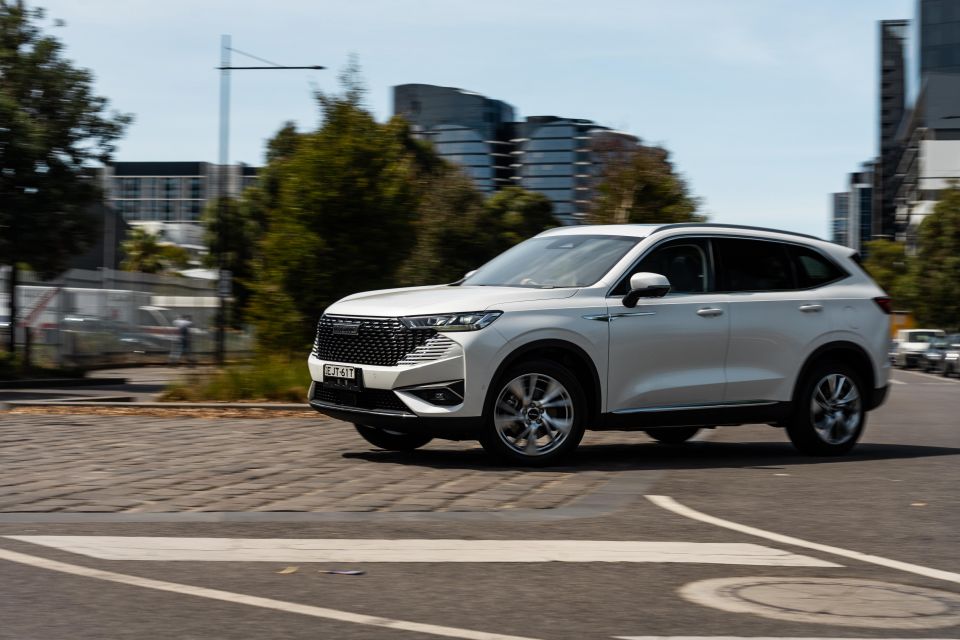
Less impressive is the Haval’s driver assistance suite, with the same quirks we’ve experienced previously – though it’s better than the smaller Jolion.
The adaptive cruise and lane centring functions should make for semi-autonomous highway driving but are far too sensitive and have a habit of over-assisting. I often found myself taking over and doing the job myself.
Blind-spot monitoring and rear cross-traffic alert functions are competitive with rival systems, however, and the excellent surround camera system offers benchmark clarity on the central display. You shouldn’t have any issues parking this thing and the 3D view is a very BMW-esque touch that’s a neat party trick.
The rotary shift-by-wire control does, however, take a bit of getting used to and can often be fiddly when trying to do something a like a three-point turn because there’s no haptic feedback to tell you when you’ve hit Reverse or Drive.
There are two variants of GWM Haval H6 Hybrid (HEV).
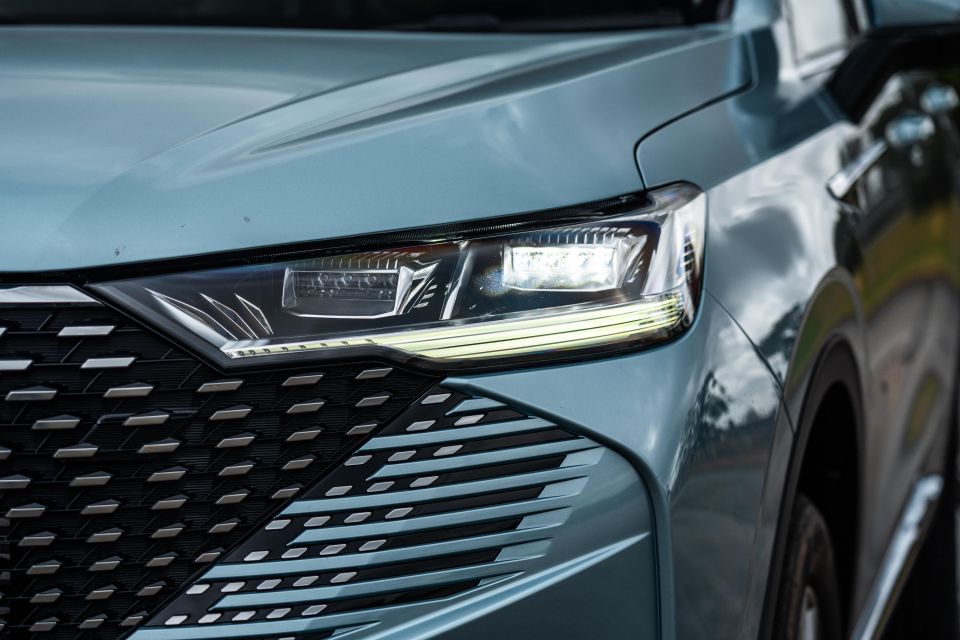
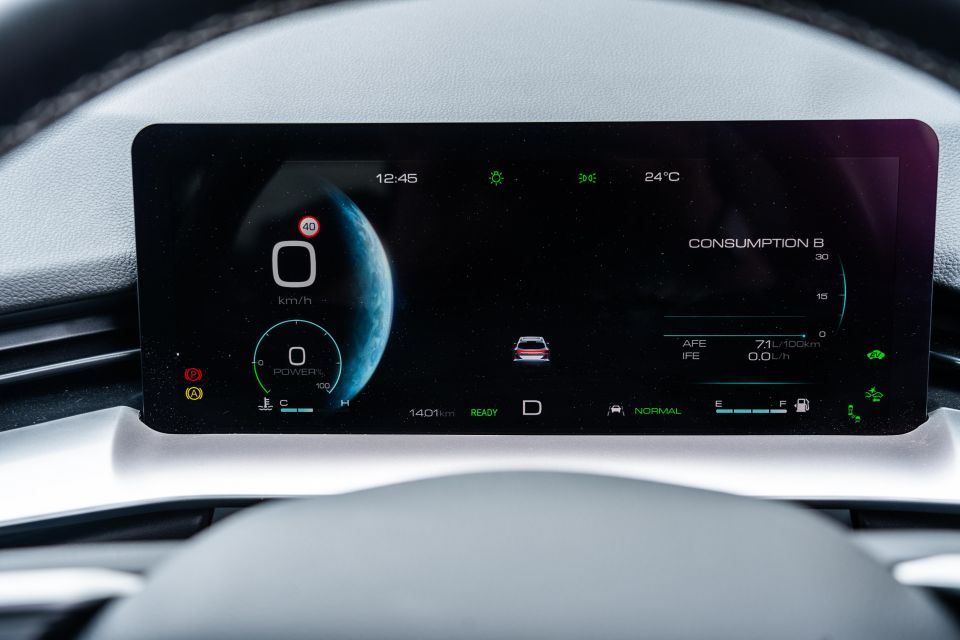
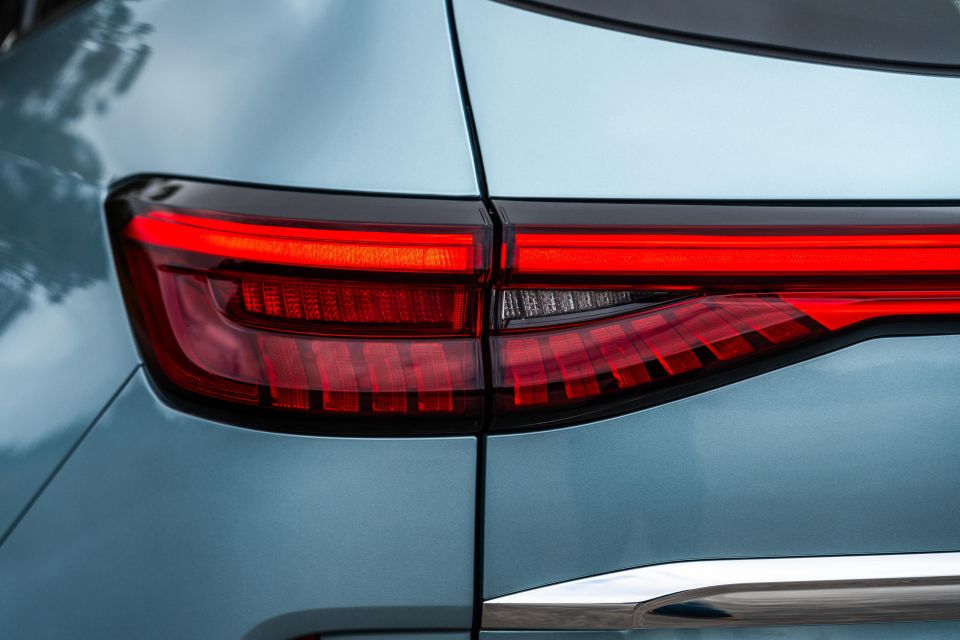
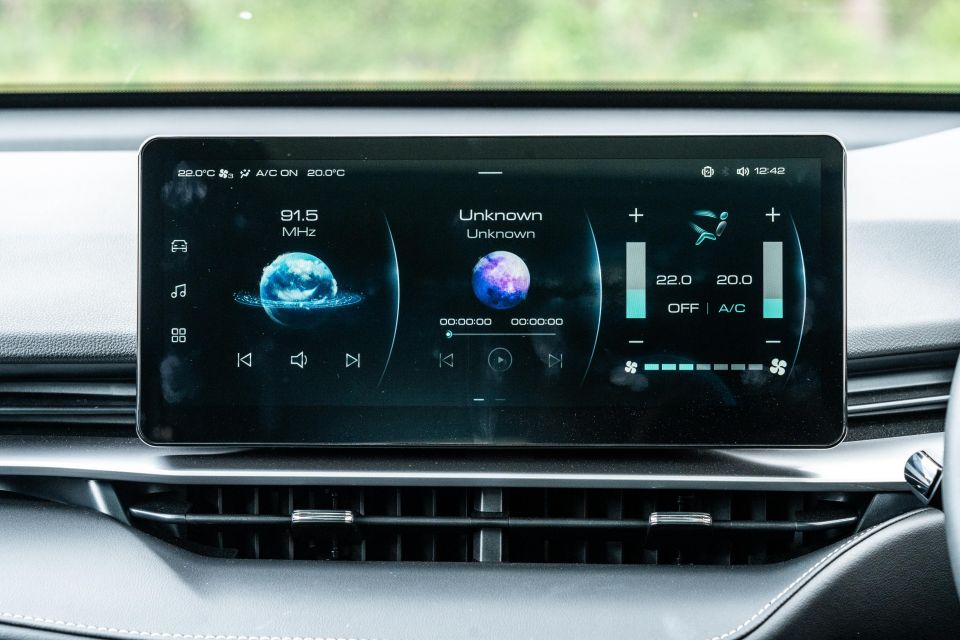
H6 Lux HEV highlights:
H6 Ultra HEV adds:
The H6 wears a five-star ANCAP safety rating based on tests conducted in Australia against 2022 criteria. As of June 16, 2022, this rating has been extended to include H6 Hybrid and H6 GT models.
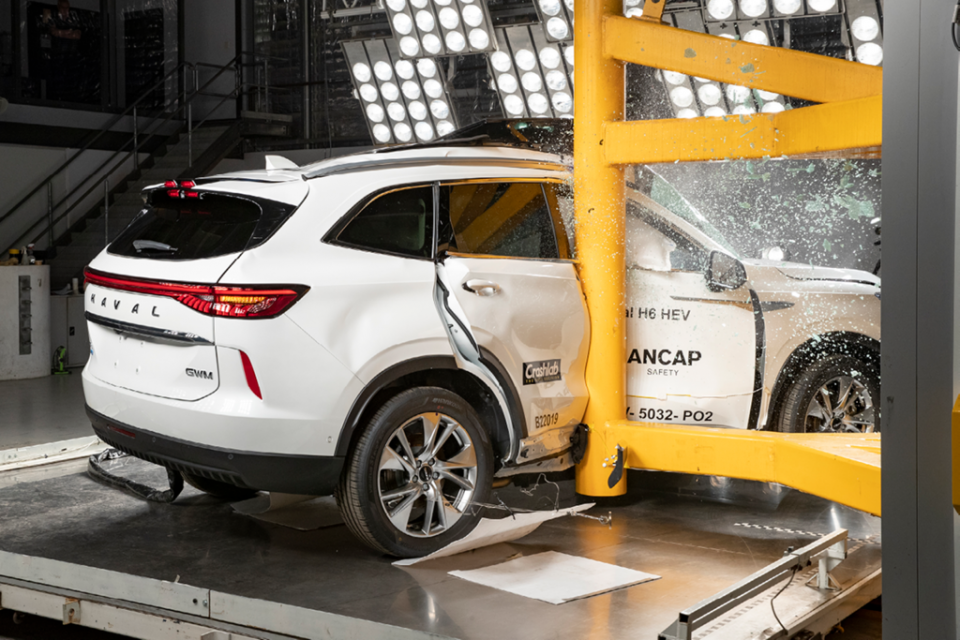
Where expert car reviews meet expert car buying – CarExpert gives you trusted advice, personalised service and real savings on your next new car.
It managed 90 per cent for adult occupant protection, 88 per cent for child occupant protection, 73 per cent for vulnerable road user protection and 81 per cent for safety assist.
Safety features include:
GWM Haval offers a seven-year, unlimited-kilometre warranty with five years of roadside assist. For hybrid models, you also get eight years of cover for the high-voltage battery with no mileage cap.
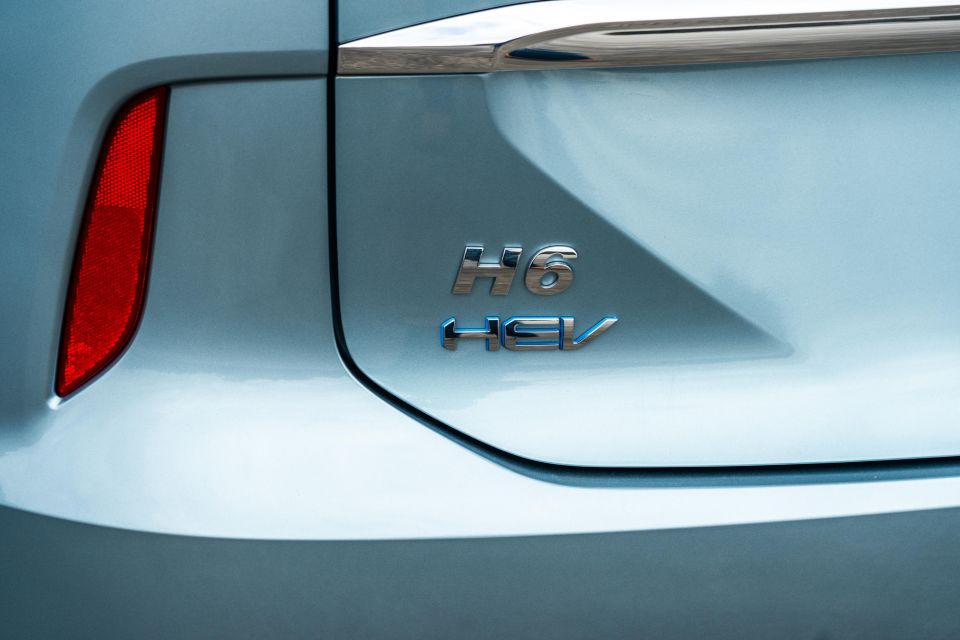
The first service is required after 12 months or 10,000km – whichever comes first – but from there the intervals are 12 months or 15,000km.
According the GWM’s capped-price service plan, the first five visits will cost $225, $250, $400, $550 and $225 respectively for the H6 HEV, coming to a total of $1650.
With an average of $330 per annum on servicing, the GWM Haval H6 is competitive for the segment. Not quite as cheap as Honda or Toyota, though.
Buy your new car without the stress. It's fast, simple and completely free.

Great service from Travis and team, second time I have used this business would not hesitate to recommend them to anyone
Craig C.
Purchased a Ford Ranger in Sunshine Coast, QLD
CarExpert helped Craig save $7,224 on his Ford Ranger, now let us save you on your next new car.
Get your BEST priceIt may not be as cheap as it once was, but the H6 HEV is still a lot of family SUV for the money.
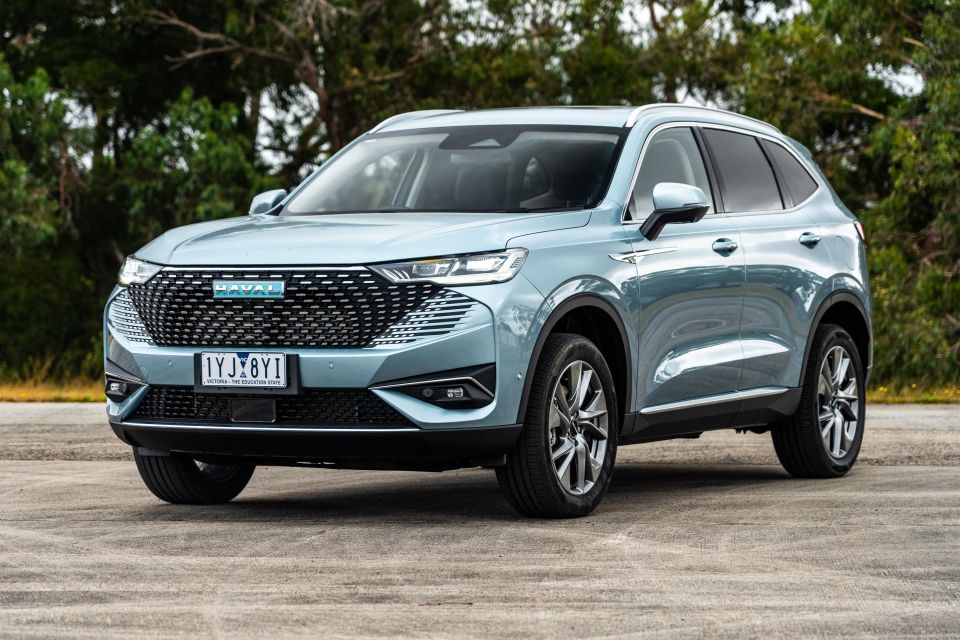
Sharp looks, a strong drivetrain along with heaps of features and space make this SUV a solid alternative to established nameplates if you’re hunting for the best bang for buck.
The $6000 premium over the equivalent petrol-only H6 Ultra is a bit steep, but the HEV’s drivetrain is superior to the 2.0-litre turbo both in refinement and efficiency making it a no brainer if you’re looking at the H6. It’s as quick, smoother and will almost halve your fuel use in everyday driving scenarios.
While the Ultra packs in flagship levels of spec for low- to mid-grade money, my advice is to save some coin and opt for the H6 Lux HEV, which is $3500 cheaper and doesn’t miss out on anything you really need.
The game continues to move on though, and as the legacy brands catch up with electrified options the Haval’s shine may start to fade.
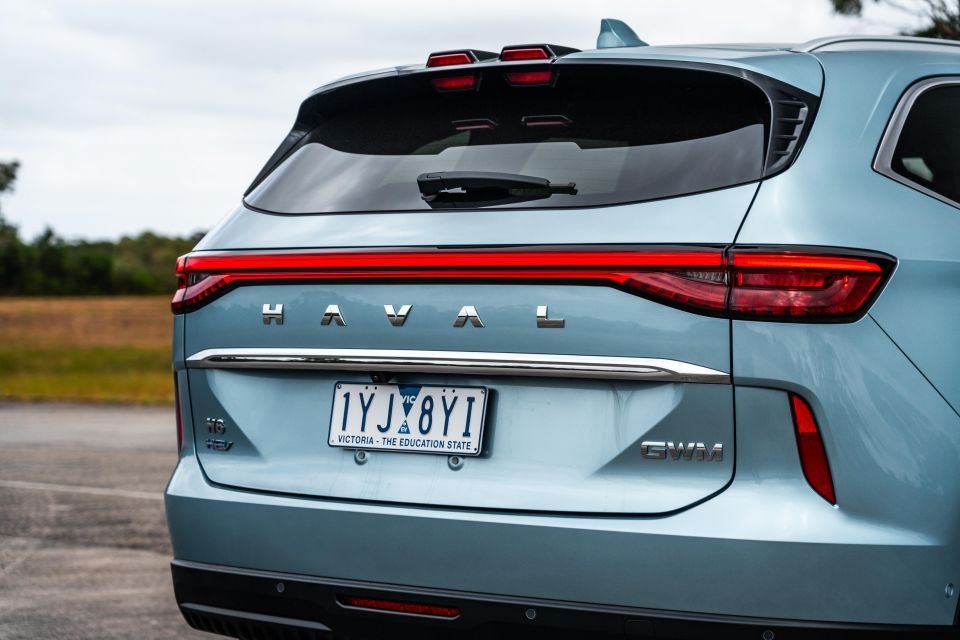
Interested in buying a GWM Haval H6? Get in touch with one of CarExpert’s trusted dealers here
Click the images for the full gallery
MORE: Everything GWM Haval H6
Where expert car reviews meet expert car buying – CarExpert gives you trusted advice, personalised service and real savings on your next new car.
James Wong is an automotive journalist and former PR consultant, recognised among Australia’s most prolific motoring writers.


William Stopford
2 Days Ago
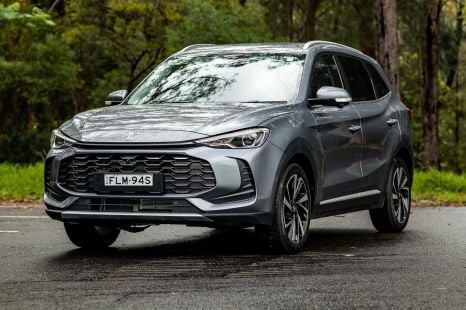

Matt Campbell
3 Days Ago
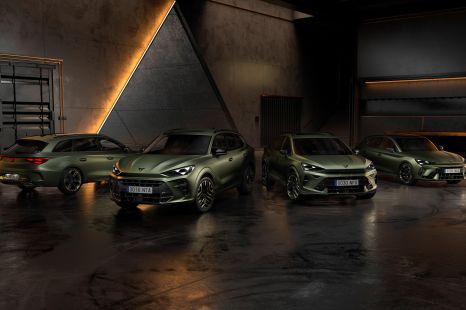

James Wong
5 Days Ago
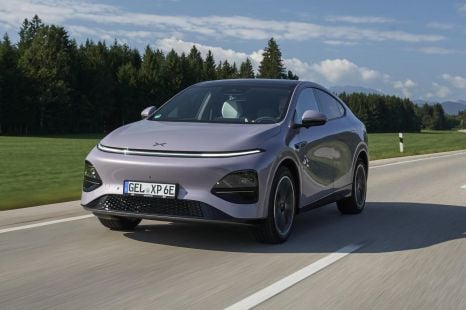

Neil Briscoe
8 Days Ago
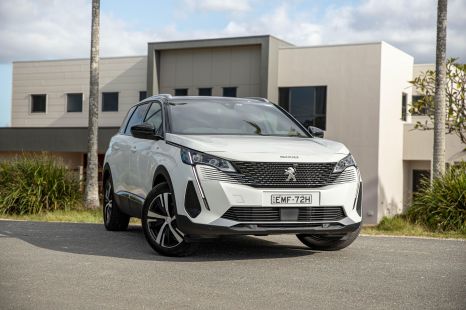

William Stopford
10 Days Ago
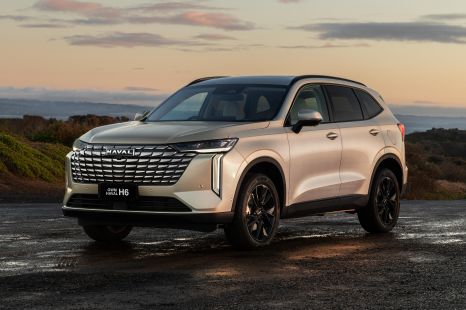

William Stopford
14 Days Ago